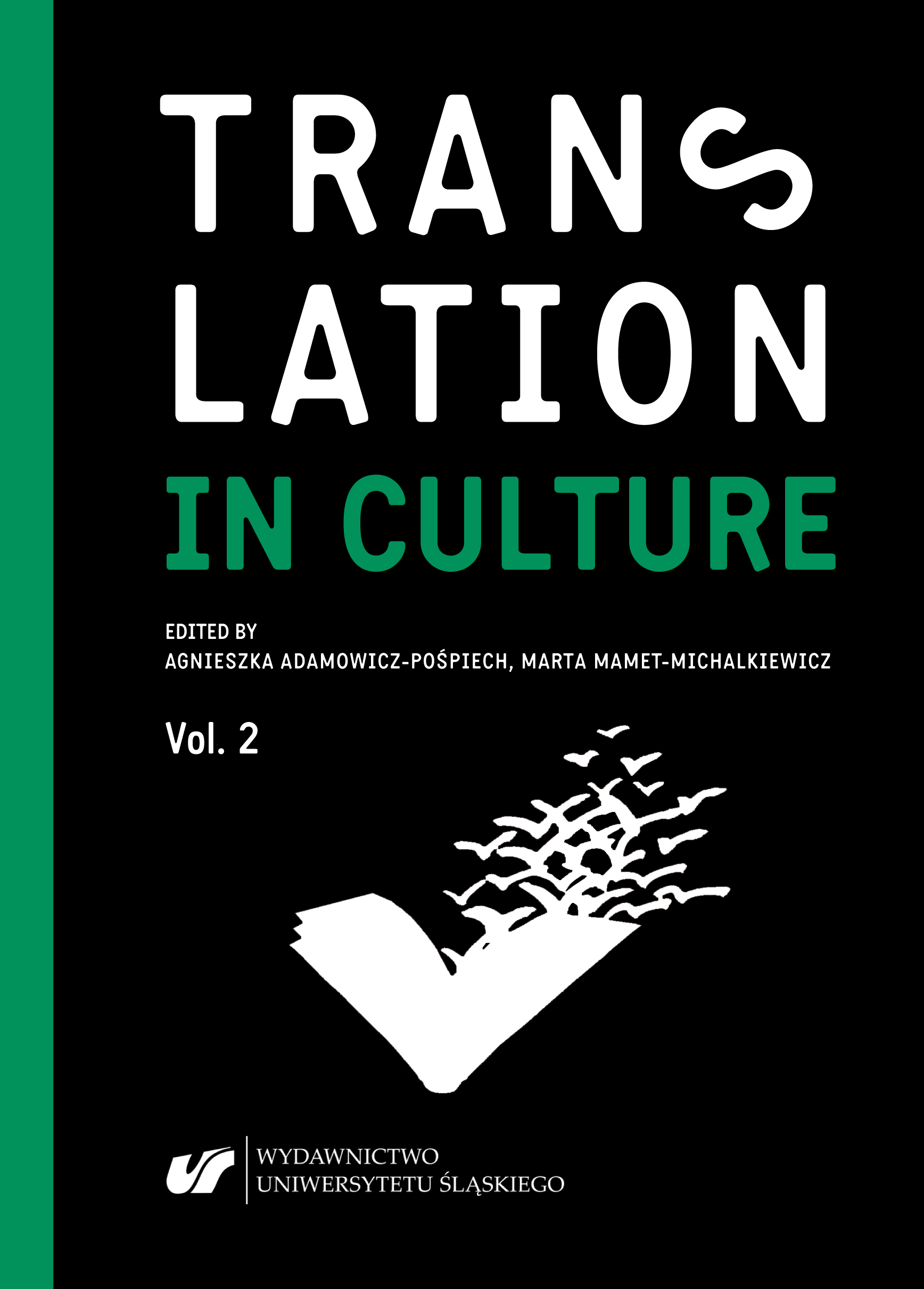Och, awa’ wi’ you. British Workin’ Class Pronunciation Spelled ‘n’ Translated into Polish
Och, awa’ wi’ you. British Workin’ Class Pronunciation Spelled ‘n’ Translated into Polish
Author(s): Jerzy Skwarzyński
Subject(s): Language and Literature Studies
Published by: Wydawnictwo Uniwersytetu Śląskiego
Keywords: literary translation; cultural differences; class division; over-standard stylization;functional equivalence;
Summary/Abstract: Abst ract : The Queen and I, a 1992 novel by Sue Townsend, is a significant piece in terms of the discussion about the class inequality in the UK as it describes the confrontation between the realm of the wealthiest group in the country, that is, the Royalty, and the everyday, grey reality of a council estate where the working class normally lives. It may be argued that this satirical work portrays the majority of the most important class differences and that it exhausts every possibility of showing these disparities in a funny but respectful manner. For this reason, The Queen and I poses a considerable challenge for translators. It is necessary for a translator to convey all of the culture-related plotlines and puns so that the translated text, apart from conveying the same information and being as amusing as the original, evokes the same reaction from the translation reader as the original does from the British reader. This arduous task becomes almost impossible to complete when it comes to the subject of scenes based on social peculiarities that do not appear in the target language culture. In this paper, I would like to focus on translation problems which emerge from expressing in the book, by means of spelling, specific pronunciation by representatives of the British working class, such as ‘Oo left the bleedin’ door open?’ This feature of working class language has been stressed for a number of reasons: to draw readers’ attention to social differences between characters, to manifest their ethnical affiliation and to create them (Hejwowski 2010). All these aims lead to the main goal which is to depict social class differences (in this case: those of linguistic nature) in perceiving and understanding the world in a humorous way. The Polish ‘class division’ is more ambiguous. Although there are cultural features that mark the difference between sophisticated, well-educated people and those literal-minded, less educated and not well-adjusted, firm pronunciation differences do not exist in Poland except for the differences stemming from belonging to various ethnic groups (e.g., in Kashubia or Silesia), in which case the difference is not educational but merely geographical. Attempts to convey the aforementioned peculiarity by using varieties of pronunciation would seem artificial. In the only translation of the book into Polish, done by Hanna Pawlikowska- Gannon, this problem has been solved in various ways. The aim of this article is thus to compare her solutions with the original, evaluate them, examine applied translation techniques, and contribute to the general debate on fidelity and content lost in translation.
Book: Translation in Culture. (In)fidelity in Translation. Vol. 2
- Page Range: 105-117
- Page Count: 13
- Publication Year: 2019
- Language: English
- Content File-PDF

